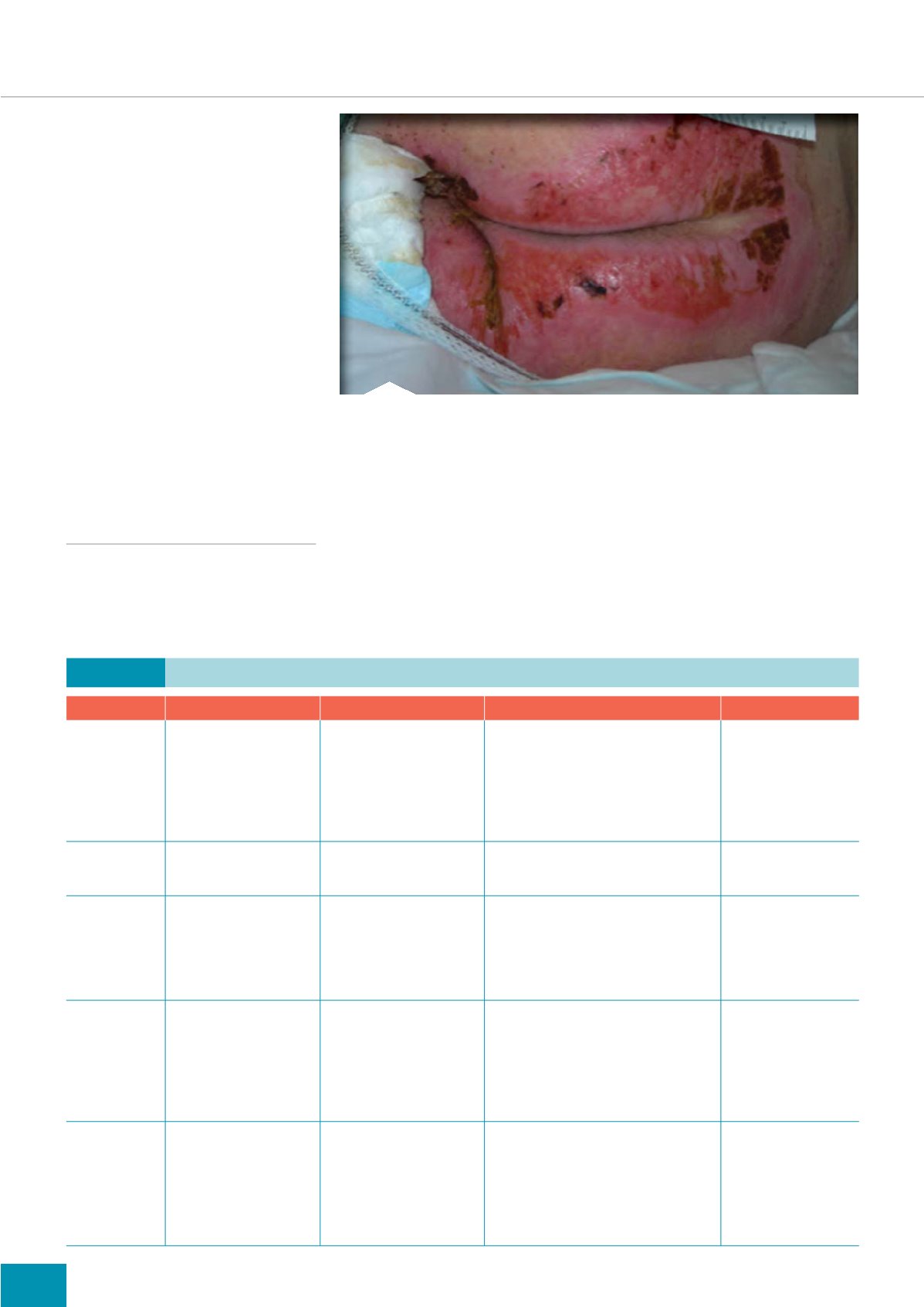
26
SKIN CARE TODAY
2015,Vol 1, No 1
FOCUS ON INCONTINENCE-RELATED SKIN DAMAGE
i
Table 1:
([DPSOHV RI PRGHUQ FOHDQVLQJ DJHQWV
3URGXFW
$FWLYH LQJUHGLHQWV
%HQHÀWV
$SSOLFDWLRQ LQVWUXFWLRQV
3UHFDXWLRQV
Secura
™
(Smith and
Nephew)
Hydroxypropel
methylcellulose
Aloe
Benzethonium chloride
Glycerin
Polysorbate 20
Purified water
Gentle to the skin, leaves
protective film to prevent
moisture loss
Antimicrobial properties
Secura is a liquid spray bottle and is sprayed
directly onto the soiled area or onto a damp
cloth then wiped
No rinsing necessary
None stated by company
ComfortShield
™
(SAGE products)
Liquid dimethicone
moisturiser
Ready-to-use cloth. Cleanses
and protects skin by depositing
dimethicone
Prepared cloths in a packet or tub, ready to use None stated by company
Proshield™
(H&R Healthcare)
Dimethicone 1%
May be used on intact or
injured skin associated with
incontinence
Available as a foam spray
Proshield Foam and Spray Cleanser can either
be sprayed directly onto the affected area and
wiped off, or applied using a washcloth. No
rinsing or moisturisers are needed
Not to be used alone if
yeast/fungal infection
present, but can
be applied over an
antifungal/anti-
yeast cream
TENA Wash
Cream™ (SCA)
Glyceral stearate
Stearyl alcohol
Water
Cetearyl isononate
Cetearath-20
Available as a 3-in-1 formula
Used for frequent perineal skin
care of incontinent patients and
also for full body cleansing
Helps maintain skin’s pH and
control odour
Apply directly to the skin with TENA wipes
or gloves
No rinsing required
Not to be used on
broken skin
Mildly scented
Clinisan™ foam
cleanser (Synergy
Health)
Amphoteric surfactant/
cocamide DEA
Liquid paraffin/isopropyl
myrisate
Alkoxylated cetyl alcohol
Triclosan
Dimethicone
Available as direct-to-skin
foam cleanser
Neutral pH
Apply directly to skin
No rinsing required
Not to be used on
broken skin
Contains perfume
Contains antibacterial
properties
not remain in contact with the skin for
an extended period of time. However,
loose stool or diarrhoea increases the
potential for skin damage by both
increasing the skin’s permeability, due
to higher moisture presence against
the skin, and elevating the pH. In
addition, proteolytic enzymes and
bacteria within faeces attack the skin
causing further damage (Chatham
and Carls, 2012).
The two main causes of diarrhoea
or loose stool are complications
related to enteral feeding (Wiesen
et al, 2006) and
Clostridium difficile
(Tonna and Welsby, 2005). The
resultant IAD presents as inflamed
skin affecting the perineum, sacrum
and buttocks (
Figure 1
).
SKIN CLEANSING,
AND PROTECTION
While management of the cause of
incontinence is essential, it is equally
important to act appropriately to
protect the skin. Grey et al (2012)
outlined guidelines for healthcare
professionals in the cleansing and
protection of the skin.
Skin protection is likely to involve
the use of continence pads. These
are designed to be worn in close
proximity to the body and comprise
three layers:
i
A top layer designed to allow
urine to pass through and so keep
the skin dry
i
An absorbent layer of cellulose to
absorb and retain urine
i
A backing layer (Colpman, 2012).
It is important that the individual
wears the correct size and shape of
pad for their body. This ensures close
contact, but of greater importance is
Figure 1.
Widespread IAD in a 65-year-old male, caused by unmanaged diarrhoea.


